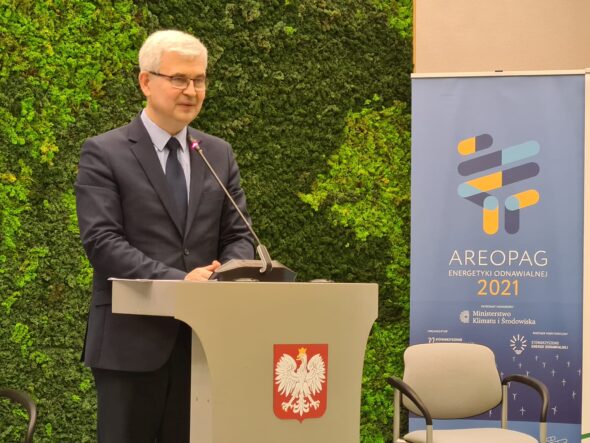What goes on in Poland on the 10th of December.
Polish hydrogen strategy has been published
The Polish hydrogen strategy was published in the Journal of Laws. It determines goals for the development of the hydrogen market by 2030 and 2040, including the development of a study of the hydrogen highway from the North to the South of the country.
The strategy identifies 44 actions to achieve its goal of industrial-scale hydrogen production and the accompanying value chain. „The strategy supports all methods of low- and zero-emission hydrogen production, including: water electrolysis, gasification technology, biomass fermentation or pyrolysis, biogas steam reforming, biomethane steam reforming, gasification, thermal processing or pyrolysis of waste, waste gases, hydrocarbon steam reforming with the use of CO2 capture and storage technology (CCS / CCU), coal gasification using CCS / CCU technology, IGCC and IGFC technology,” lists the Ministry of Climate.
The strategy also includes the development of a feasibility study for the North-South hydrogen pipeline, referred to in the document as the “hydrogen highway”. There is also a “study of the existing gas infrastructure in terms of the possibility of injecting hydrogen and transporting hydrogen-gas mixtures”.
Poland wants to have 27-29 GW in RES by 2025
The Ministry of Climate and Environment predicts that the RES capacity in Poland will reach 27-28 GW in 2025.
„In the last two years we have been struggling with a pandemic, economic crisis and inflation. However, we are not losing sight of the efforts to modernize the country with the use of the latest technologies, also in the energy sector, including renewable energy,” said Deputy Minister of Climate and Environment Ireneusz Zyska during the Areopag Energetyki Odnawialnej 2021 conference under the patronage of BiznesAlert.pl.
Currently Poland’s RES capacity sits at 15,200 MW. According to minister Zyska, in 2025 this capacity will increase to approximately 27-28,000 MW installed in various renewable energy technologies. „The main ones are wind on land and sea, but also photovoltaics, biomethane and biomass. We also do not forget about small hydropower and geothermal energy,” the minister enumerated. In his opinion, renewable energy sources integrated with the power system will increase the country’s energy security. The climate ministry informed that the total photovoltaic capacity may amount to approx. 17 GW. Additionally, the RES auctions show that the total capacity of onshore wind energy may be approx. 10-11 GW.









